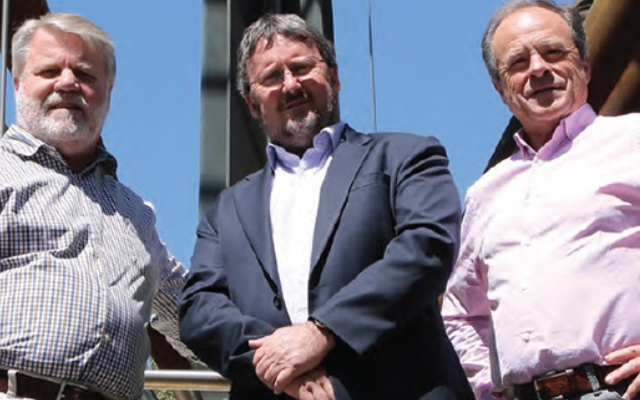Raising the standards
 Construction standards are so woven into the physical fabric of society that most people give little thought to the incredible amount of research and expertise that goes into our human-created landscapes. But what exactly are they and why are they important?
Construction standards are so woven into the physical fabric of society that most people give little thought to the incredible amount of research and expertise that goes into our human-created landscapes. But what exactly are they and why are they important?
“Construction standards define the level of public safety that we are mandated to achieve in our buildings and public infrastructure,” says self-confessed concrete obsessive, Professor Stephen Foster. “The government sets the policy on how safe things should be, and then based on those settings we design a series of standards and codes for engineers to design by, to ensure that we meet the acceptable levels for public safety.”
Professor Foster, who is Head of the School of Civil and Environmental Engineering (CVEN), is joined in his passion for concrete by long-time colleague Professor Ian Gilbert, and for a combined total of 60 years, they have profoundly influenced the development of one of the most crucial standards used by the Australian construction industry: The Australian Standard for Concrete Structures, or, as Professor Gilbert fondly refers to it, AS 3600.
UNSW engineers are shaping the global construction industry through their engagement with Australian and international construction standards
“There are American and European construction standards, but we use the Australian standards and very significant parts of AS 3600 and its Commentary have been written by Steve and myself,” says Professor Gilbert.
This means that the research conducted by Professors Foster and Gilbert has formed the basis of design for every concrete structure in Australia.
When you think about it, that’s huge!
CVEN has played a large role in the development of a number of major Australian construction standards since the inception of the University in 1947. This includes: steel structures, concrete structures, timber structures, masonry, and the relative newcomer: composite structures. Today, the construction standards brains trust is still housed in the School, but has its own specialised research facility called the Centre for Infra- structure and Engineering Safety (CIES).
And ‘brains trust’ is about right for Professor Gilbert, who says the team at CIES (which has 15 academic staff, 25 full-time researchers and upwards of 60 PhD students) is without doubt the strongest group in the country. “We have at least four of the top 10 academics working in this area in our team. No other group comes close to this.”
So, the next question on our lips is, how are these stand- ards formed and how do they change over time?
Professor Gilbert, who has been involved in developing AS 3600 since the early 1980’s, is only too happy to explain:
“Each standard has a committee that is charged with developing and progressing the standard. The AS 3600 Committee, for example, consists of major stakeholders including academics like Professor Foster and my- self, but also representatives from concrete materials suppliers, steel reinforcement suppliers, the Institution of Engineers Australia and the Concrete Institute of Australia,” he says.
“Since the early 1930s, when the first Australian concrete structure standard came out, the Committee has continually improved and revised the standard in light of new construction techniques, materials and design methodologies.” Although a large and important part of the CIES research team’s work is in Australia, its influence over construction standards actually extends across the whole globe.
“I was engaged in the early 2000s to help develop the fib Model Code for Concrete Structures 2010 and research conducted at UNSW was also used to inform that Code,” says Professor Foster.
fib, which stands for Fédération internationale du béton or (in English) the International Federation for Structural Concrete, is a not-for-profit organisation that is responsible for developing the European construction stand- ards and is formed by about 1000 members from 43 national member groups. The 2010 Model Code is the most comprehensive code on concrete structures ever published and Professor Foster is currently involved in the 2020 edition.
For his part, Professor Gilbert is involved in American concrete standards development through the Ameri- can Concrete Institute; and other CIES heavyweights, Professors Mark Bradford and Brian Uy also have deep international responsibilities.
Professor Bradford, who has himself attracted several million dollars of research funding from the Australian Research Council (ARC), is heavily involved in reviewing research applications for ARC’s counterparts in Europe.
So, how does it feel to be part of a community of researchers, both past, present and future, whose work so profoundly shapes the world? Professor Foster is emphatic:
“I’m immensely proud of everything we continue to achieve. It’s about that sense of achievement, of having creating something new that positively impacts the economics of society and the community. That’s exactly why we do what we do.”



